Authors: Benoit Denet & Martin Gillet
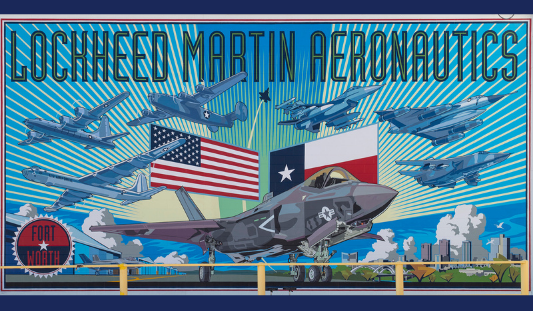
For Aviation24.be, we had the exceptional opportunity to visit the impressive Lockheed Martin (LM) factory located in Fort Worth, Texas. The impressive assembly hall, located on the south side of Lake Worth, assembles all versions of the F-35.
Fort Worth proudly celebrated 75th of innovation earlier in March 2022.
About the production plant
Plant number 4 is 1.6 km long and includes two Lightning II assembly lines. The building was commissioned by Consolidated on April 18, 1942, just nine months after construction began. At that time, it housed a B-24 Liberator production line. This four-engine aircraft was built in an impressive total of 18,482 units, and carried out numerous missions over Germany, including a flyover of Belgian territory.
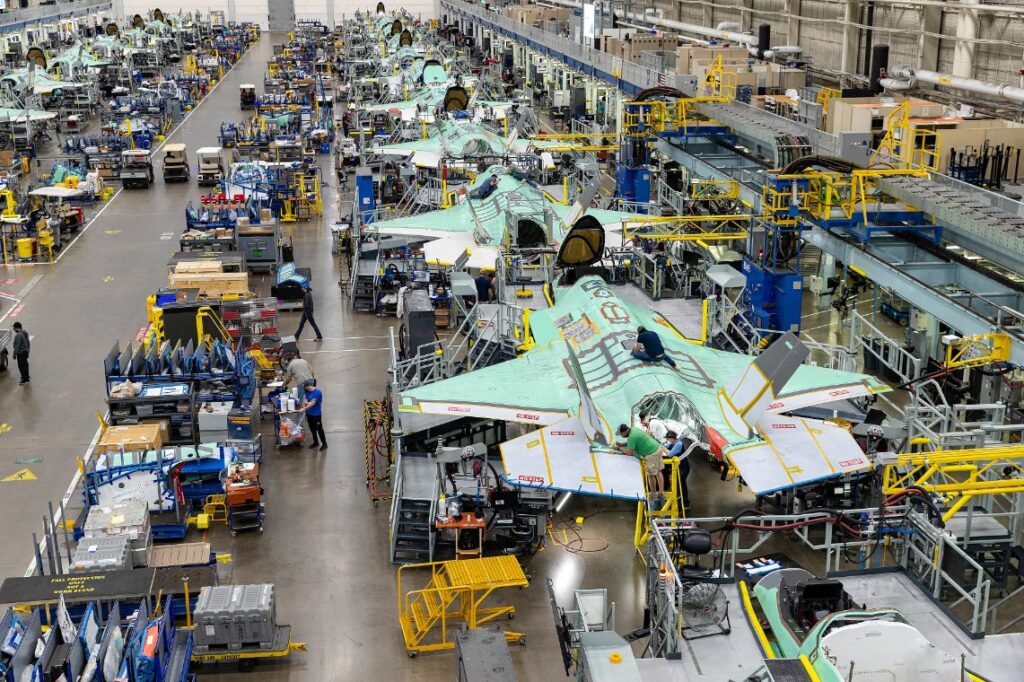
To speed up deliveries of the B-24, aircraft were assembled at the plant at the same time as completion of the main assembly hall. A total of 3,034 B-24s were produced at the Texas plant, along with 287 examples of a cargo/transport variant called the C-87 “Liberator Express”, at a rate of 11 per day. More than 30,000 people were employed at the plant during the Second World War, one-third of them women (nicknamed “Rosie the Riveter”). Before the end of the Second World War, a larger heavy bomber was produced in hall 4, the B-32 “Dominator”. It was intended as a replacement for the Boeing B-29 in the event of the latter’s failure, and saw very little service with Pacific-based units. Most contracts for this aircraft were cancelled, and only 118 were built.
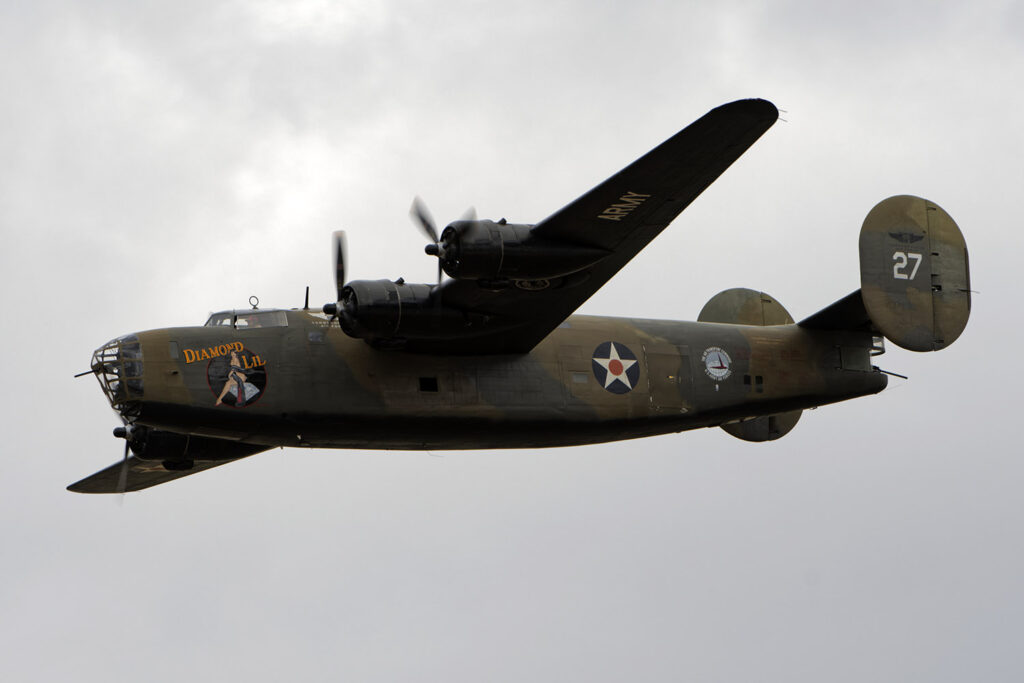
In 1943, Convair was created by the merger of Consolidated Aircraft and Vultee Aircraft.
The late ’40s saw the start of production of the gigantic B-36 “Peacemaker”, the first truly intercontinental bomber. Equipped with six piston engines and four jet engines, this aircraft was capable of taking off from the USA, crossing the Atlantic Ocean and returning to base without in-flight refuelling.
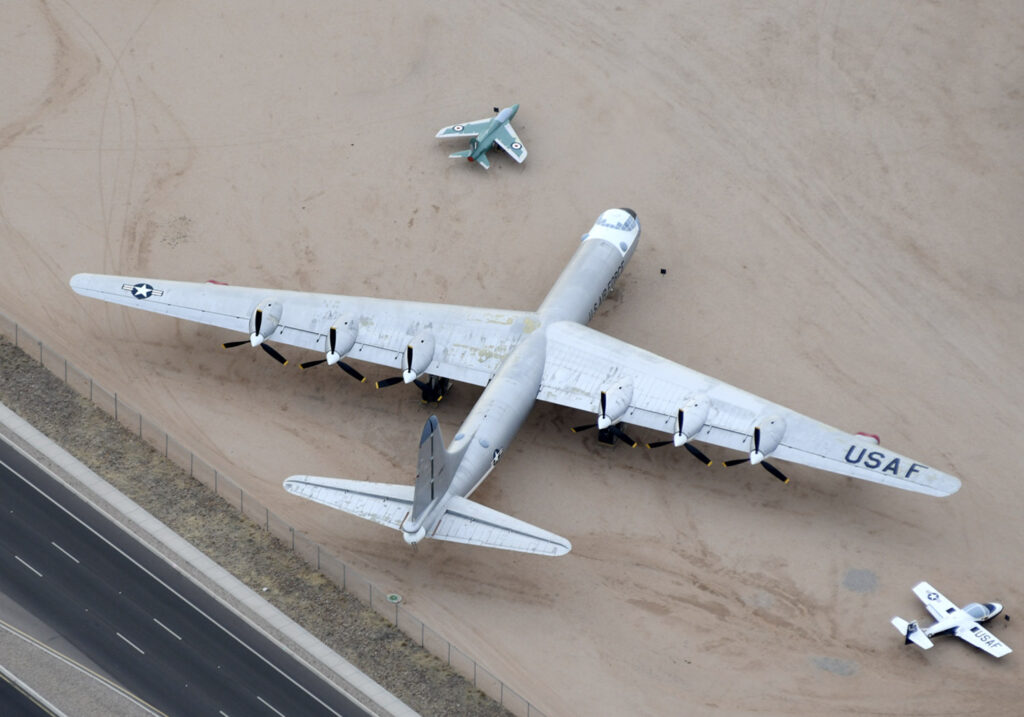
Arriving in the late ’50s, the four-engine, swept-wing B-58 “Hustler” bomber took its place on the assembly line. It was the world’s first supersonic bomber to fly at twice the speed of sound. In 1953, the company was acquired by General Dynamics, which operated it as the Convair division for most of its history.
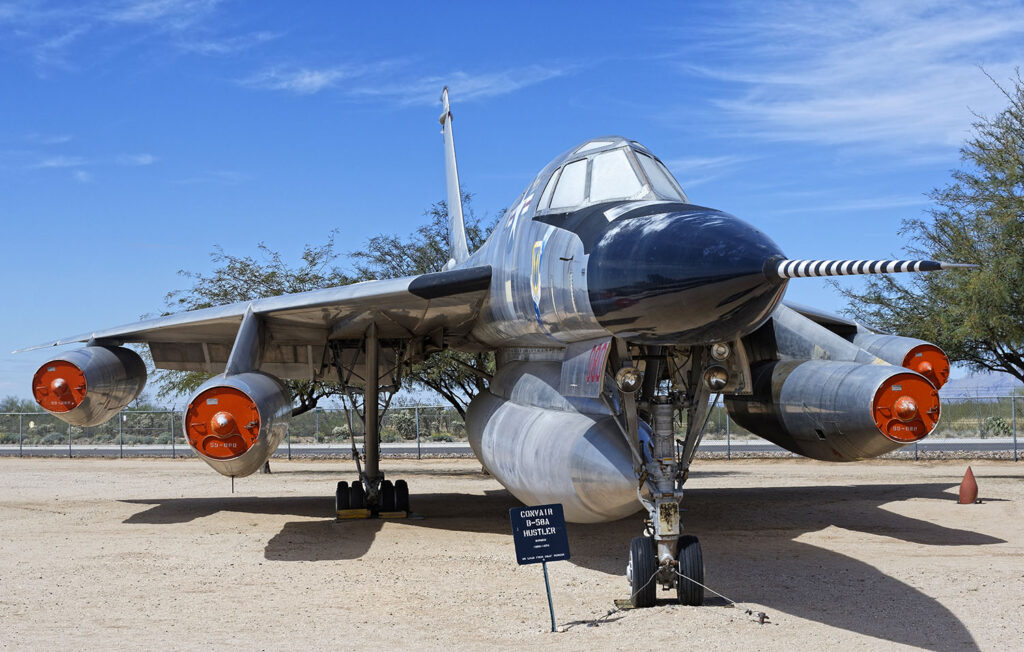
In the 60’s and 70’s, the factory began building fighter jets, after 30 years spent on bombers. The F-111 “Aardvark”, a twin-engine variable-geometry bomber, was given this honour. A total of 562 were built for the USA and Australia. It began its operational life over Vietnam in 1968. In 1986, many F-111s took off from their bases in Great Britain to bomb Libya during Operation El Dorado Canyon.

From the mid-70s to 2017, the iconic F-16 took its place on the assembly line. Serial number 4,588 was the last to be produced in Fort Worth, and it left the factory in October 2017. The remaining F-16s are currently built at Lockheed Martin’s Greenville plant in South Carolina.
Hall Four (AFP4) also produced the centre fuselage for the F-22 “Raptor” from the mid-1990s to 2011. These components were then transferred to the Marietta plant in Georgia for final assembly before delivery to the USAF.
Production of the F-35 “Lightning II” Joint Strike Fighter began in 2004, and almost 650 aircraft have been produced to date. Today, the plant is dedicated to production of the F-35.
After reorganisation, Convair disappeared under the name of General Dynamics in 1974. In 1993, Lockheed Martin acquired General Dynamics Military Aircraft and the Fort Worth site for $1.5 billion.
Production Plant tour

The Fort Worth site covers 7.4 million square meters, including 5.6 million square meters of air-conditioned space. Known as the “Bomber Factory” for the first 30 years of operation, the plant retains a street to the west of the factory, called Bomber Row.
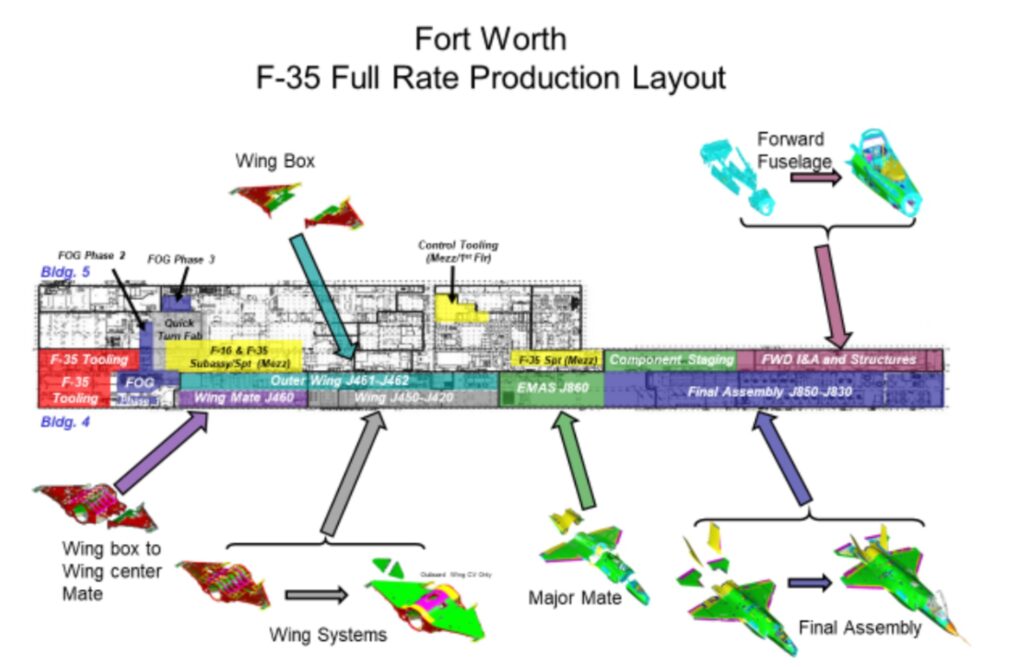
Throughout our visit, we saw the manufacture of the wings and, a little later, the assembly of the four main components of the aircraft: the front fuselage, the centre fuselage, the centre wing section and the rear fuselage section. At each workstation, a TV screen provides constant information on the progress of the aircraft. All versions, as well as the nationalities of the purchaser countries, are mixed together on the production lines. As we make our way along, we come across the cockpit envelope of the first model (AY-01) destined for Belgium. A little further on, its wings.
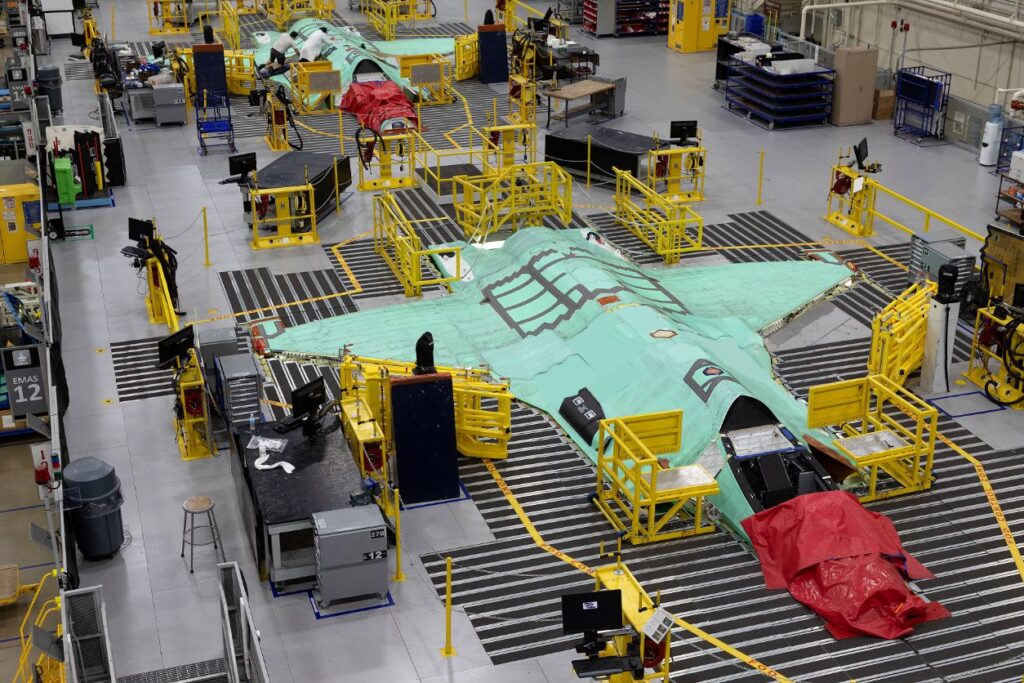
We were also able to discover the paint shop, which is specific to this machine. After a short stroll outside, some twenty units lining the runway were ready for test flights. Two C versions of the F-35, destined for the US Navy, have just taken to the skies.
Lockheed Martin produces around 150 F-35s a year, and the sales target for the A version of $80 million has been reached.
The components of the F-35 aircraft, including the wings and the front, rear and centre fuselages, which are built simultaneously in-house and at various partner sites, are assembled in the Electronic Mate & Assembly System (EMAS). Final assembly comprises two sections: section 850, where assembly is completed, and section 830, where much of the systems testing is carried out. Engines are installed during final assembly. Aircraft exit through the three large doors at the north end of the factory. Aircraft must be virtually ready to fly after final assembly. Once the aircraft leave the factory, they move on to the Aircraft Final Finish (AFF), then to the Aircraft Test Facility (ATF) for Radar Cross Section (RCS) measurements, then to the refuelling facility for engine and Integrated Power Package (IPP) tests, followed by the first test flights on the flight line to the east of the factory.
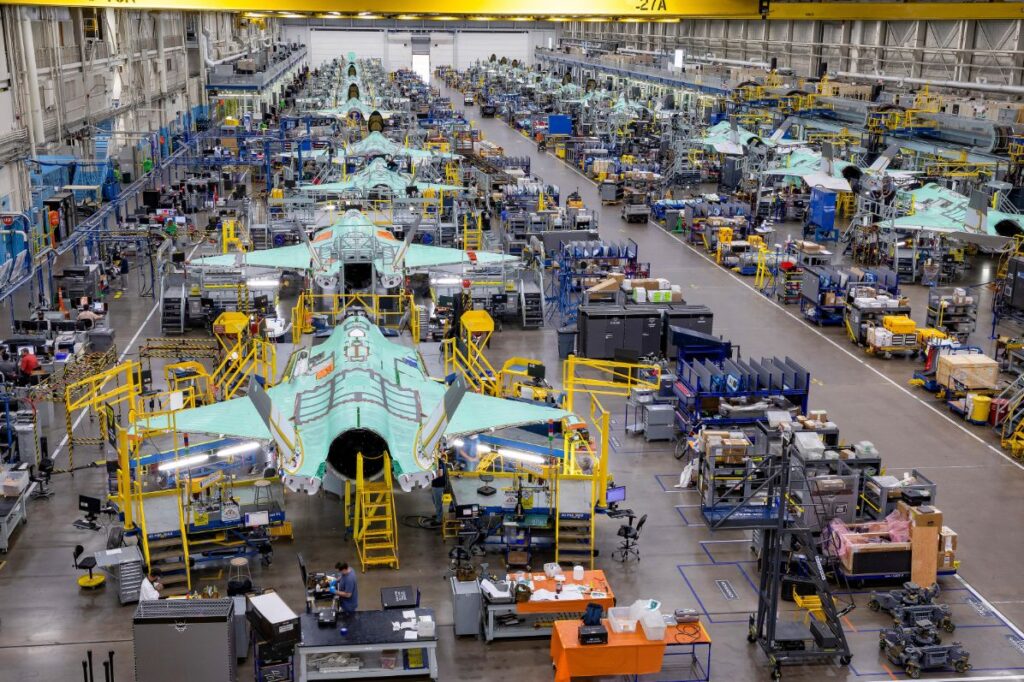
Overall, it takes about 19 months from loading the central wings in Marietta, Georgia, to delivery of the aircraft here in Fort Worth. Material lead times add about 24 months to the total time from customer order to delivery.
The F-135 engine is supplied by Pratt and Whitney in its non-pivoting nozzle version for the A and C versions, and in its pivoting nozzle version for the B version.
All final assembly platforms and tools can be used on all three variants of the F-35. Like everything else at Lockheed Aeronautics, safety features such as crash protection and collision avoidance are integrated.
LM strives to improve affordability year-on-year by investing in automation technologies and continuing to improve parts quality and availability. As production is planned for many years (F-16s have been in service for over 40 years and continue to operate), the introduction of new technologies is planned for future years.
The program is truly international, and supports many customers, helping to reduce costs relative to volume for the F-35. Horizontal tail skins and harnesses are manufactured in Denmark, vertical tails in Australia, wing boxes in Israel, outer wings for the C model in Canada, and complete wing components in Italy. While the USA is the main customer and financial backer, the UK, Italy, the Netherlands, Canada, Australia, Norway and Denmark have contributed US$4.375 billion to the program’s development costs. These countries were the program’s customer partners. Other sales, known as Foreign Military Sales or FMS, were concluded with Korea, Israel, Japan and Belgium. Israel and Singapore are also associated with the program.
Current situation on June 1st 2023

The F-35 is designed and built internationally in four (4) major assemblies, enabling it to benefit from a broad base of technology and experience. The front fuselage and complete wings are manufactured at the Texas site, while the central wing section is produced at the Marietta site. The central fuselage is built by Northrop Grumman in Palmdale, California. The tail section, horizontal and vertical stabilizers are currently built by BAE SYSTEMS in Samlesbury, UK, the edges are installed at LM’s Johnstown, Pennsylvania facility, and the finishing touches are applied at Marietta. Maximum production capacity in Fort Worth will be 15 units/month. There are two other final assembly and inspection facilities, one in Italy producing 2 aircraft per month, and the other in Japan producing 0.5 aircraft per month.
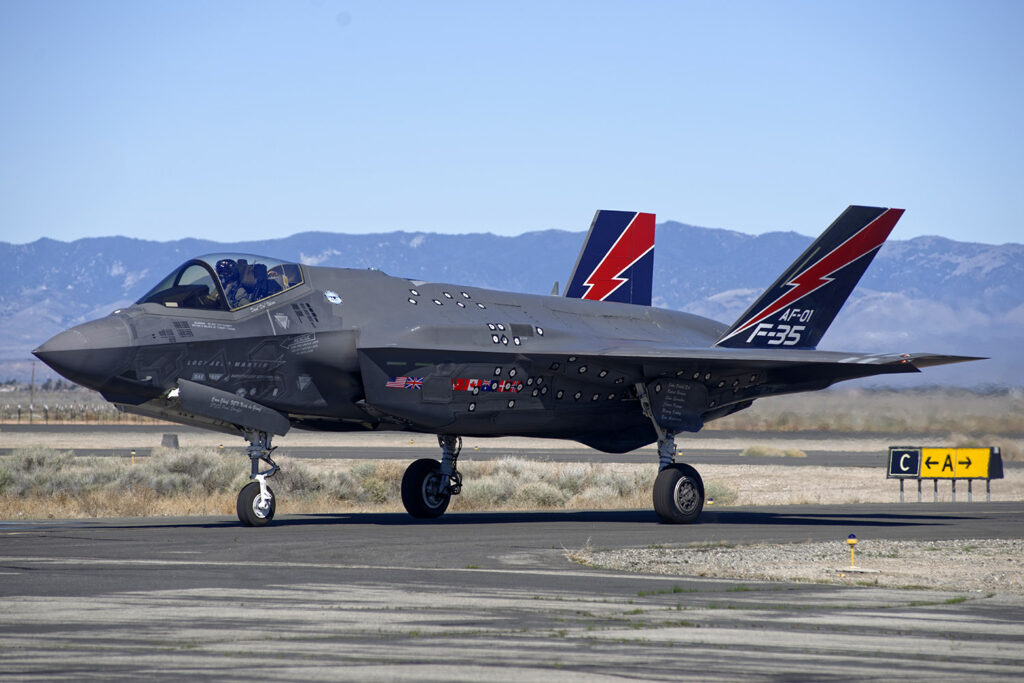
The FW plant is the first assembly line to successfully produce 3 variants of the same aircraft for all three services (Air Force, Navy and Marines) since the F-4 Phantom in the 1960s. The aim was to maximise the commonality between the different aircraft and reduce costs compared to having each aircraft built by a different company.
Features of the F-35
The Lockheed Martin F-35 Lightning II is a family of fifth-generation, single-seat, single-engine, multi-role combat aircraft being developed to perform ground attack, reconnaissance and air defence missions with stealth capability.
The JSF program is designed to replace the U.S. Army’s F-16, A-10, F/A-18 and AV-8B tactical fighters. To reduce development, production and operating costs, a common design was planned in three variants: mission systems are 100% common, vehicle systems are 70% common, and structures (due to different missions and requirements) are less than 20% common. It has been estimated that a three-variant line reduces overall production costs by 30% compared with three separate lines and three separate companies.
The F-35 has three variants: the F-35A is a conventional takeoff and landing variant, the F-35B is a short takeoff and vertical landing variant, and the F-35C is a carrier-based variant. Although they have important points in common, the three versions have very different missions and requirements from their respective services. The “A” model is designed for 9 G and the other variants for 7 to 7.5 G. The “A” version is fitted with a standard gun, while the other variants use a gun pod that is installed according to mission requirements. The “B” model is equipped with a feature that enables it to take off and land like a helicopter. The “C” model features folding wings to accommodate two aircraft on a carrier elevator, and a 15% longer wingspan to improve lift-off in light winds over the carrier deck.
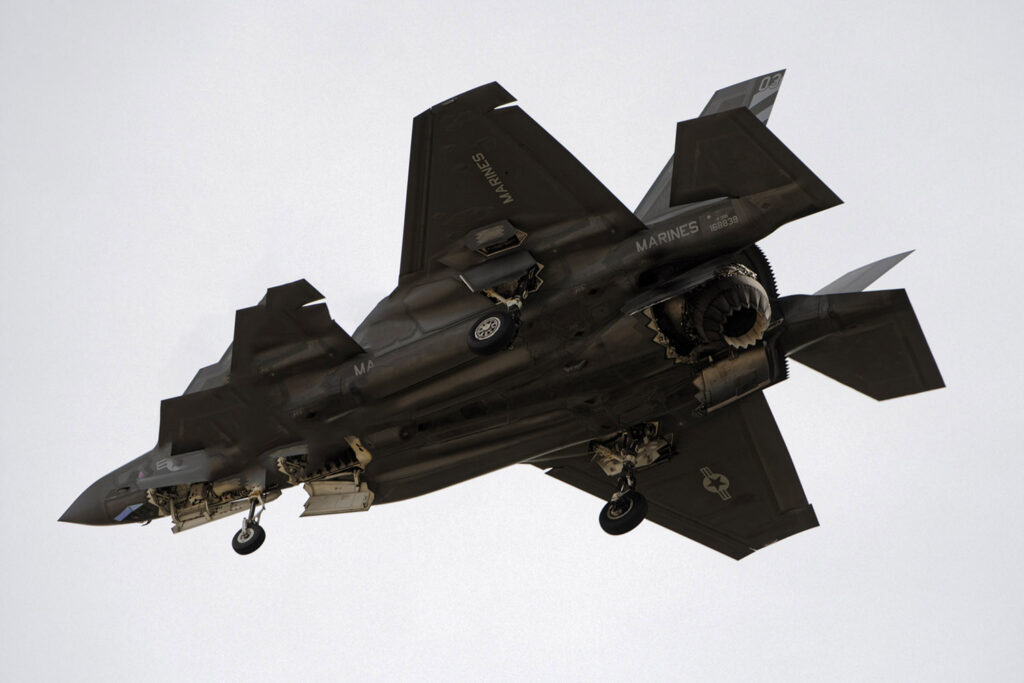
The F-35 has 8 million lines of code written for it, while the F-22 has only 2 million. The aircraft can be reprogrammed to achieve different performances according to mission requirements and country preferences.
The pilot’s helmet features state-of-the-art augmented reality – seeing through the aircraft with DAS (Distributed Aperture System) cameras.
The jamming power of this aircraft is 10 times greater than that of older aircraft.
In 2001, Lockheed Martin won the largest defence contract ever awarded by the US government. Between them, the United States and Great Britain will buy more than 2,600 aircraft, with sales of around $200 billion.
Visit of Major General Dupont
On June 7, the Commander of the Belgian Air Component, Major General Thierry Dupont, visited the Lockheed Martin plant in Fort Worth, where he saw the first Belgian F-35 on the production line.
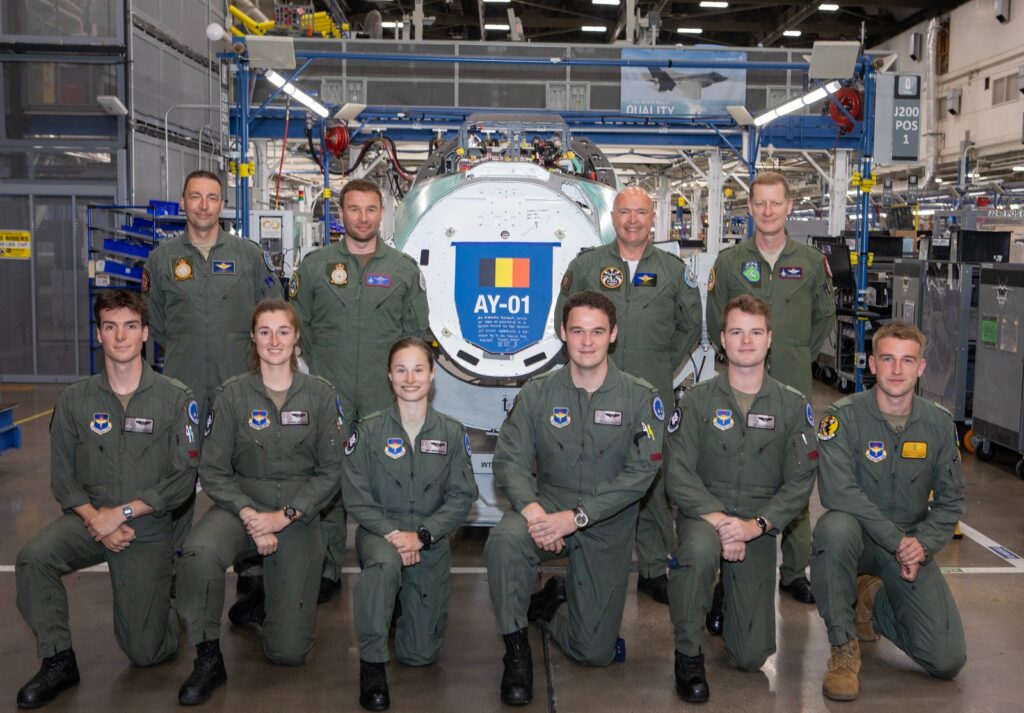
The next stage in the production of this first F-35 will be its entry into the EMAS. Once the aircraft is out of EMAS, the final phase of assembly begins. Belgium will celebrate the delivery of its first F-35 later this year.
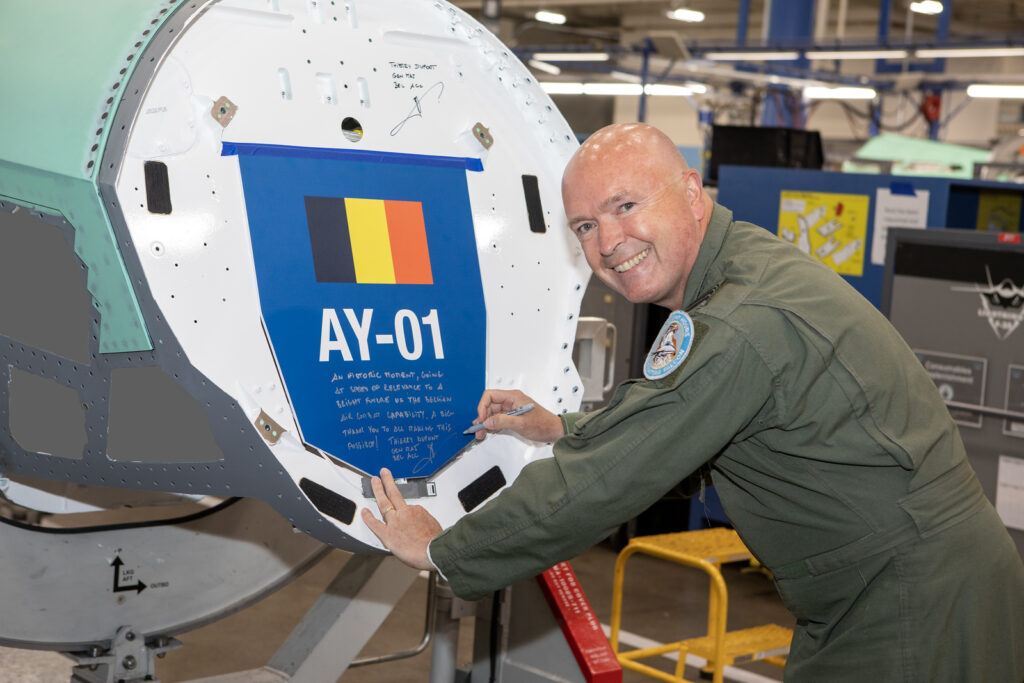
The aircraft will be delivered to Luke Air Force Base in Arizona, USA, where the first Belgian F-35 pilots will be trained. The Belgian Air Component will deploy 34 F-35As. The first delivery to Belgium is scheduled for 2025 at Florennes air base. From 2027, F-35s will also be based at Kleine-Brogel. Although airframes under production are under AY-XX number range, the final registration will be from FL-01 to FL-34, according to Minister Dedonder.
In late May 2023, the Department of Defence also unveiled the colours that the Air Force’s future F-35 fighter jets will sport, with tricoloured roundels, but in muted colours.
Black-yellow-red : “Use will be made of ‘low-tone’ colours (black, yellow and red, with grey for markings), in accordance with the American AMS Standard 595A,” said an adviser to Minister Dedonder (PS)”.
We would like to express our gratitude to Lockheed Martin for enabling this visit. A Big Thank you to all parties involved, your time and your flexibility.
Related articles
- SEO Powered Content & PR Distribution. Get Amplified Today.
- EVM Finance. Unified Interface for Decentralized Finance. Access Here.
- Quantum Media Group. IR/PR Amplified. Access Here.
- PlatoAiStream. Web3 Data Intelligence. Knowledge Amplified. Access Here.
- Source: https://www.aviation24.be/military-aircraft/belgian-air-component/lockeed-martin-fort-worth-insights-with-focus-on-belgian-air-component-commander-attending-production-of-first-belgian-f-35/



